Ford has revealed the next-generation Ranger, which offers a choice of diesel powertrains, including the addition of Ford’s powerful V6 turbodiesel.
Order books for the new Ford Ranger will open in Europe in late 2022 for customer delivery in early 2023.
Jim Farley, president and chief executive officer of Ford Motor Company, said: “This truck has always been a trusted partner to small business owners, farmers, families, adventurers, commercial fleets and so many more in more than 180 markets around the world.
“And with the new Ranger, this is our moment to deliver. Not just a product our customers will love, but an always-on experience that will help us build strong and lasting relationships with them. This is the midsize truck people will want to own and experience.”
The current Ranger is Europe’s pick-up segment leader and recently set a new September year-to-date sales record of 45,539 units, with market share of 39.9%.
“Ranger continues to go from strength to strength in Europe with record-breaking sales,” added Hans Schep, general manager for commercial vehicles at Ford of Europe.
“The smartest, most capable, most versatile Ranger yet will deliver even more of the strength and style that we know customers value.”
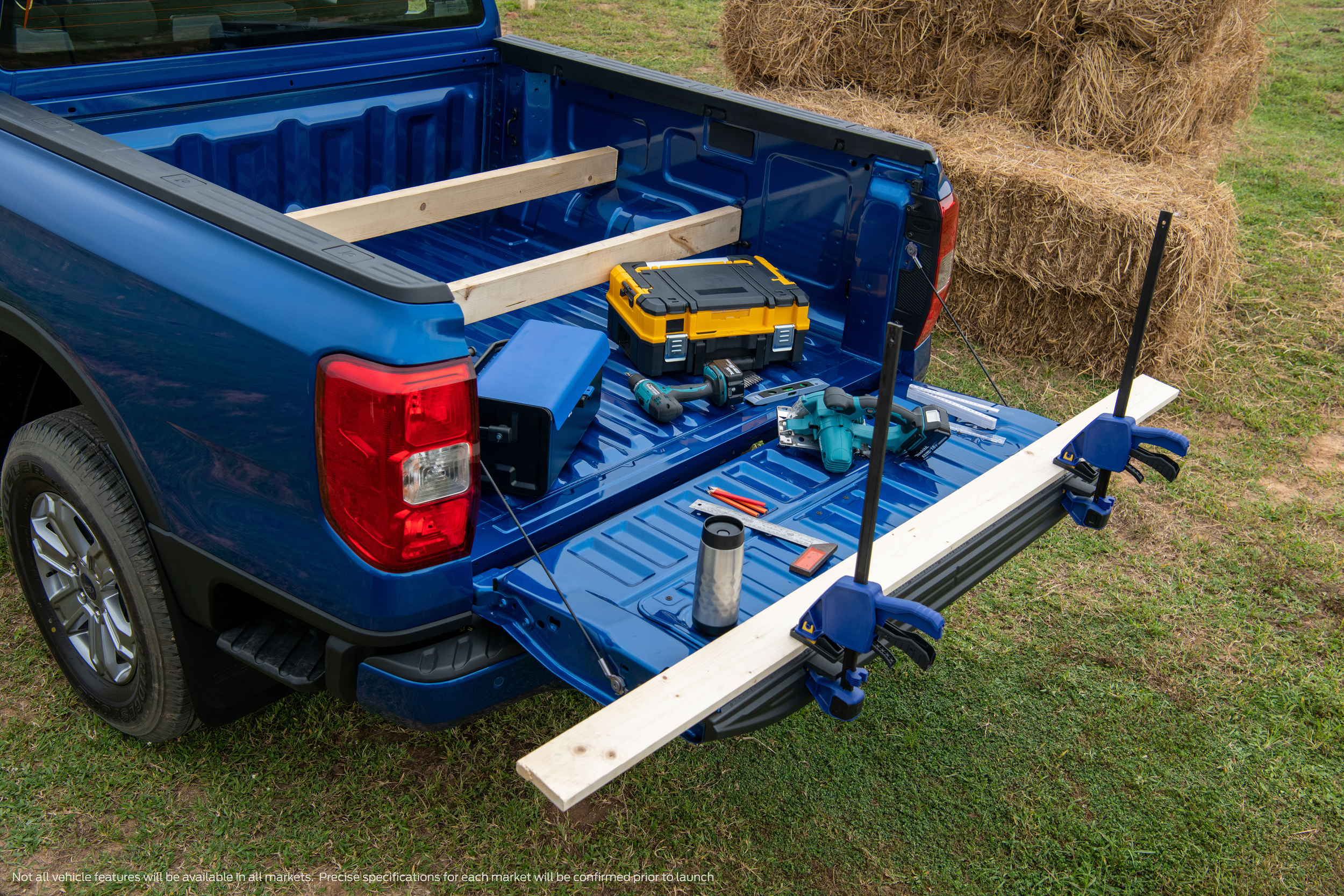
The next-gen Ranger project was led by Ford’s product development centre in Australia. Its international team of dedicated designers and engineers worked with teams around the globe to not only incorporate the very latest in Ford technology, capability and safety, but to also engineer and test the Ranger to Ford’s toughest standards.
“Our team was focused on one goal – to make this Ranger the toughest and most capable we’ve ever created,” said Graham Pearson, Ranger vehicle program director.
“They put it through one of the most exhaustive global testing schedules we’ve ever developed and would not rest until we were satisfied that it was Built Ford Tough.”
Ford spent a lot of time with owners around the globe, conducting more than 5,000 interviews and dozens of customer workshops to understand how customers used their pick-ups and what they wanted and expected in the new Ranger.
The new design features a defined new grille, and signature C‑clamp headlight treatment at the front while a subtle shoulder line down the sides incorporates bolder wheel arches.
For the first time, Ford Ranger offers matrix LED headlights. At the back, the taillights are designed in harmony with the signature graphics on the front.
Inside, the car‑like cabin steps up, using premium soft‑touch materials, and prominent portrait‑style centre touchscreen with Ford’s signature SYNC 4 connectivity and entertainment system.
Beneath the new bodywork is an upgraded chassis riding on a wheelbase 50mm longer and a track 50mm wider than the prior Ranger.
A hydro‑formed front‑end structure creates more space in the engine bay for the new V6 engine and helps future-proof the Ranger for other propulsion technologies.
It also opens up the front of the pick-up to allow more airflow to the radiator, which helps keep running temperatures low when towing or carrying heavy loads, says Ford.
New powertrain choices
Customers wanted a choice of more power and torque for towing heavy loads and extreme off‑roading, so Ford has added its 3.0-litre V6 turbodiesel and developed it for the Ranger. It is one of three turbodiesel engine options available at launch.
“The 3.0-litre turbodiesel V6 delivers,” said Pritika Maharaj, Ranger programme manager. “When you drive a Ranger with the V6 turbodiesel, it feels like a much bigger truck. And it feels really tough in the sense that it’s got endless power and torque, which is exactly what our customers wanted.”
The next-gen Ranger will also come with a choice of proven Single-Turbo and Bi-Turbo 2.0-litre in-line four-cylinder diesels.
The Single-Turbo comes in two different performance levels and delivers power, torque and fuel economy, which is important to small business owners or commercial vehicle fleets, says the manufacturer.
The Bi-Turbo engine is a more sophisticated, performance variant for customers who want more power but need to maintain fuel economy.
Maharaj added: “We know our customers push their Rangers to the extreme, so that’s how we test them. We go the extra mile to make sure Ranger will do everything our customers want, over and over again.”
Engineers have moved the front wheels forward by 50mm for a better approach angle and outboard for better off-road articulation, both of which improve the off‑roading experience, says Ford.
They also shifted the rear suspension dampers outboard of the frame rails to give drivers and passengers a better ride both on- and off‑road, no matter if they’re carrying heavy cargo for work, or just taking the family out for dinner.
Customers will have a choice of two four-wheel drive systems – an electronic shift-on-the-fly system, or an advanced new full-time four-wheel drive system with a reassuring set-and-forget mode, designed for capability when and where customers need it. Off-road recovery is made easier with prominent dual recovery hooks in the front bumper.
Customer-focused interior features
The heart of the Ranger’s connective experience is the large 10.1-inch or 12-inch touchscreen in the centre stack.
It complements the fully digital instrument panel and is loaded with Ford’s latest SYNC 4 system, which comes customer-ready with its voice-activated communications, entertainment and information systems.
Additionally, there’s an embedded factory-fitted FordPass Connect modem, allowing connectivity on the go when linked with the FordPass app, so customers can stay connected to their world. FordPass enhances the ownership experience with features like remote start, vehicle status, and remote lock and unlock functions via a mobile device.
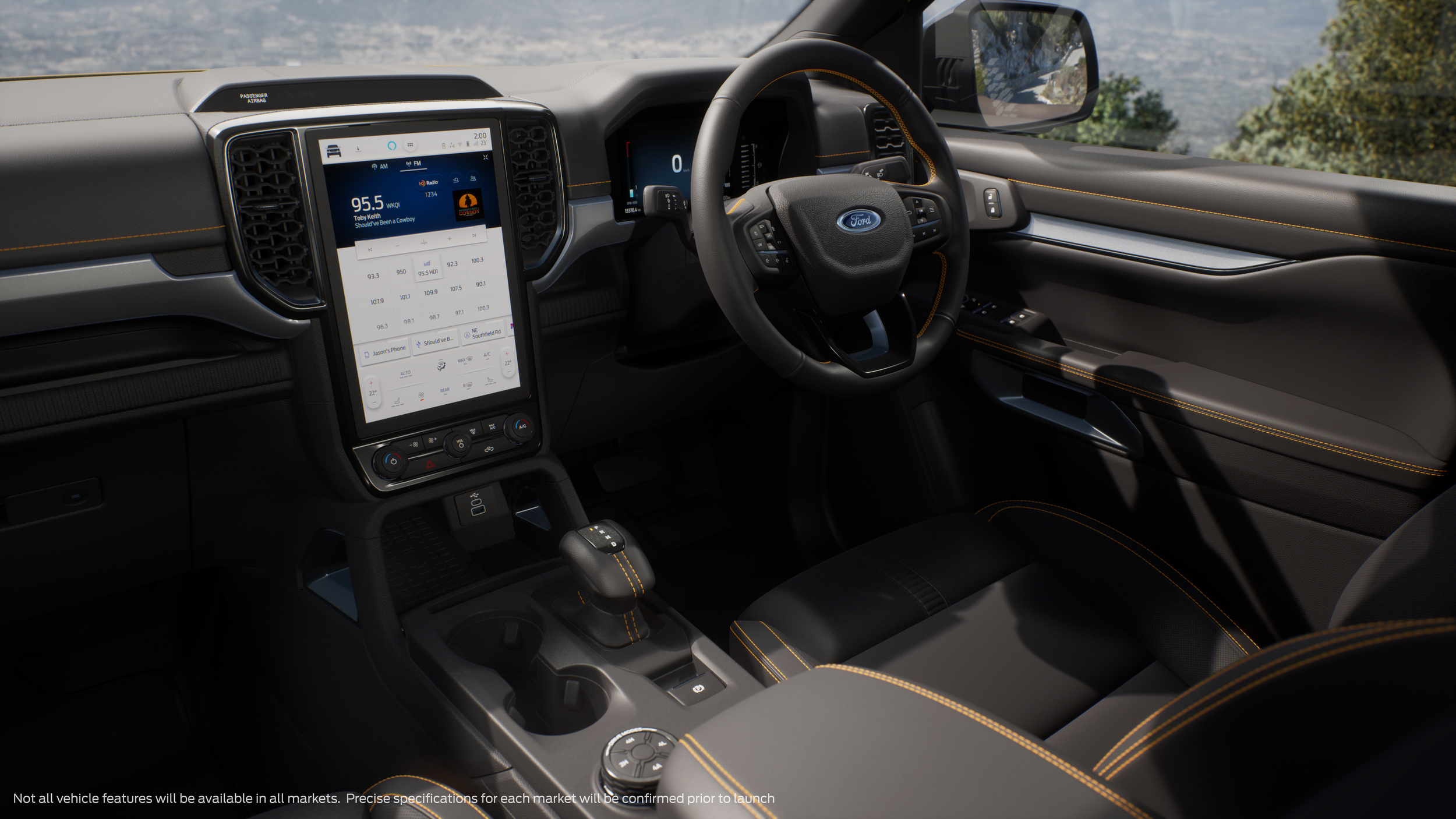
Many of the traditional driving mode controls have been moved from the dash and centre console to their own dedicated display on the SYNC screen.
With one button press, drivers can go to Ranger’s dedicated screen for all off-road and drive modes where they can monitor the driveline, steering angle, vehicle pitch and roll angles and other controls.
The screen also is linked to a 360-degree camera and customers can control Ranger’s new exterior zone lighting system via the touchscreen or the FordPass app.
Ranger technology will also be future-proofed to accept Ford Power-Up wireless software updates thanks to the embedded FordPass Connect modem.
The design team also created clever storage and useful features for owners. There are not only places to store your phone or charge it wirelessly (where compatible), but there’s a large centre console bin to stash things.
In addition, the door pockets are designed to carry more, the wide dash conceals an upper glovebox and there are storage bins under and behind the rear seats.
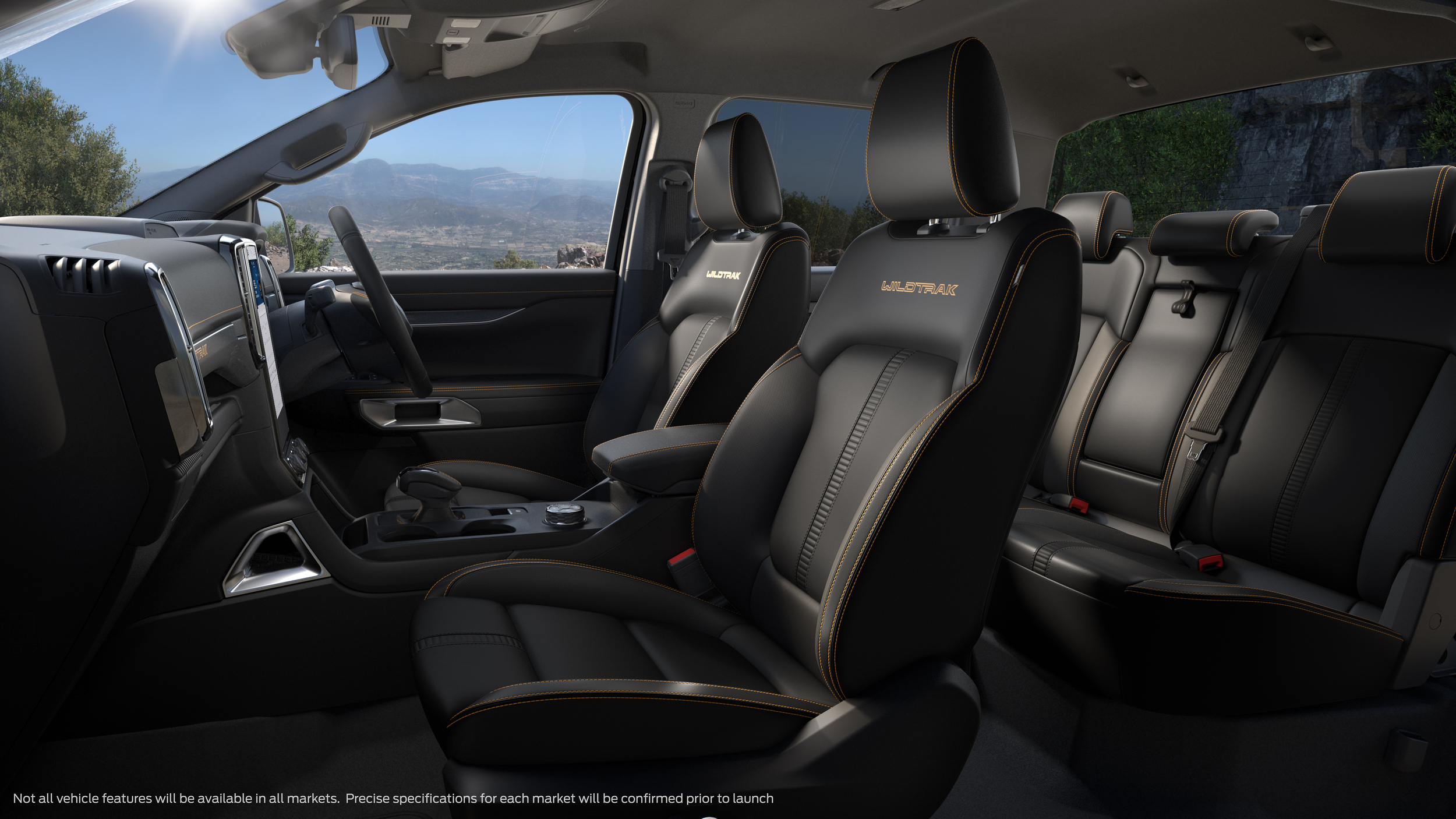
“When we met with our customers and observed how they climbed up to the load box, we saw a big improvement opportunity,” said Anthony Hall, Ranger vehicle engineering manager. “There were people stepping on the tyre and then going over the side of the truck or hoisting themselves onto the open tailgate.”
That was the inspiration for creating an integrated side-step behind the rear tyres of the next‑generation Ranger, to create a strong, more stable way for them to access the box.
In addition, the Ranger team worked to ensure that a wider variety of cargo could fit and stay secure in the load box.
“Widening the truck by 50mm may not seem like a lot, but it makes a huge difference, especially in the cargo box. It means that customers will be able to load flat some pretty fundamental items, such as a sheet of building plywood or a full-size pallet,” Hall said.
Additional customer-focused touches include a new, plastic-moulded bedliner that helps protect both the truck bed from scratches and owners’ knees from kneeling on a steel truck bed.
Extra cargo tie down points – on strong steel tube rails – provide convenient points to secure loads.
Durable, flexible load box caps around the sides of the box and across the tailgate conceal structural attachment points for canopies and other aftermarket accessories.
In addition, Ranger offers a new cargo management system designed with dividers to hold various sized items – like timber or toolboxes.
Owners also can create smaller compartments to store objects, which would otherwise have to go in the cab, using a system of ultra-strong spring-loaded cleats that clip into rails bolted to each side of the cargo box.
The tailgate can also double as a mobile work bench with an integrated ruler and clamp pockets to measure, grip and cut building materials.
Customers in Europe will be able to personalise their next-gen Ranger from launch with a range of over 150 fully factory‑backed work, urban and adventure accessories. These accessories include those developed in collaboration with global off-road icon, ARB 4x4 Accessories.
The next-generation Ranger will be built at Ford’s plants in Thailand and South Africa beginning in 2022, with other markets to be announced at a later date.



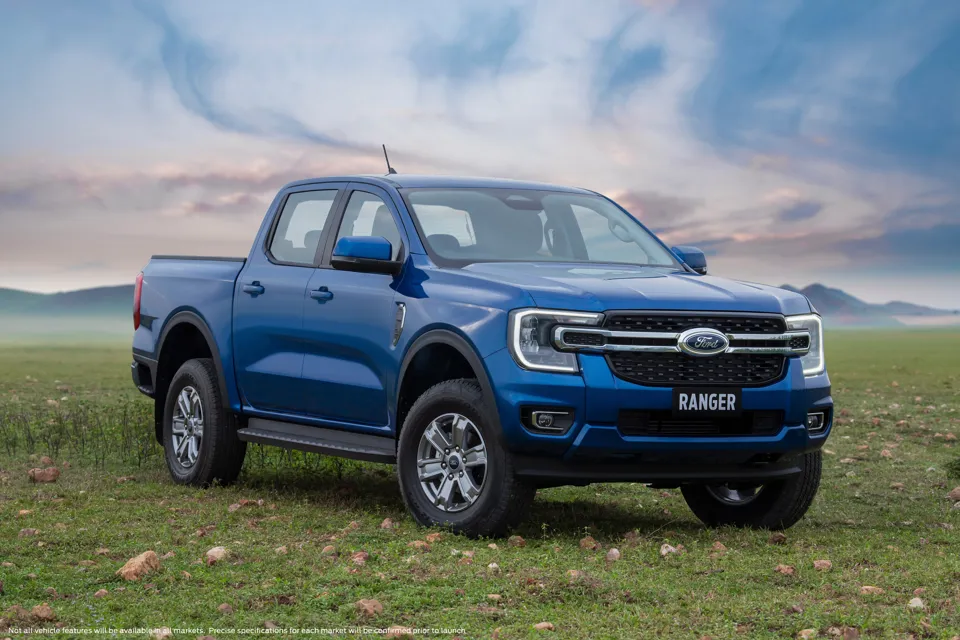

















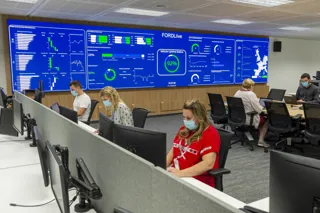
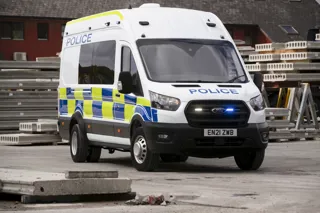

Login to comment
Comments
No comments have been made yet.